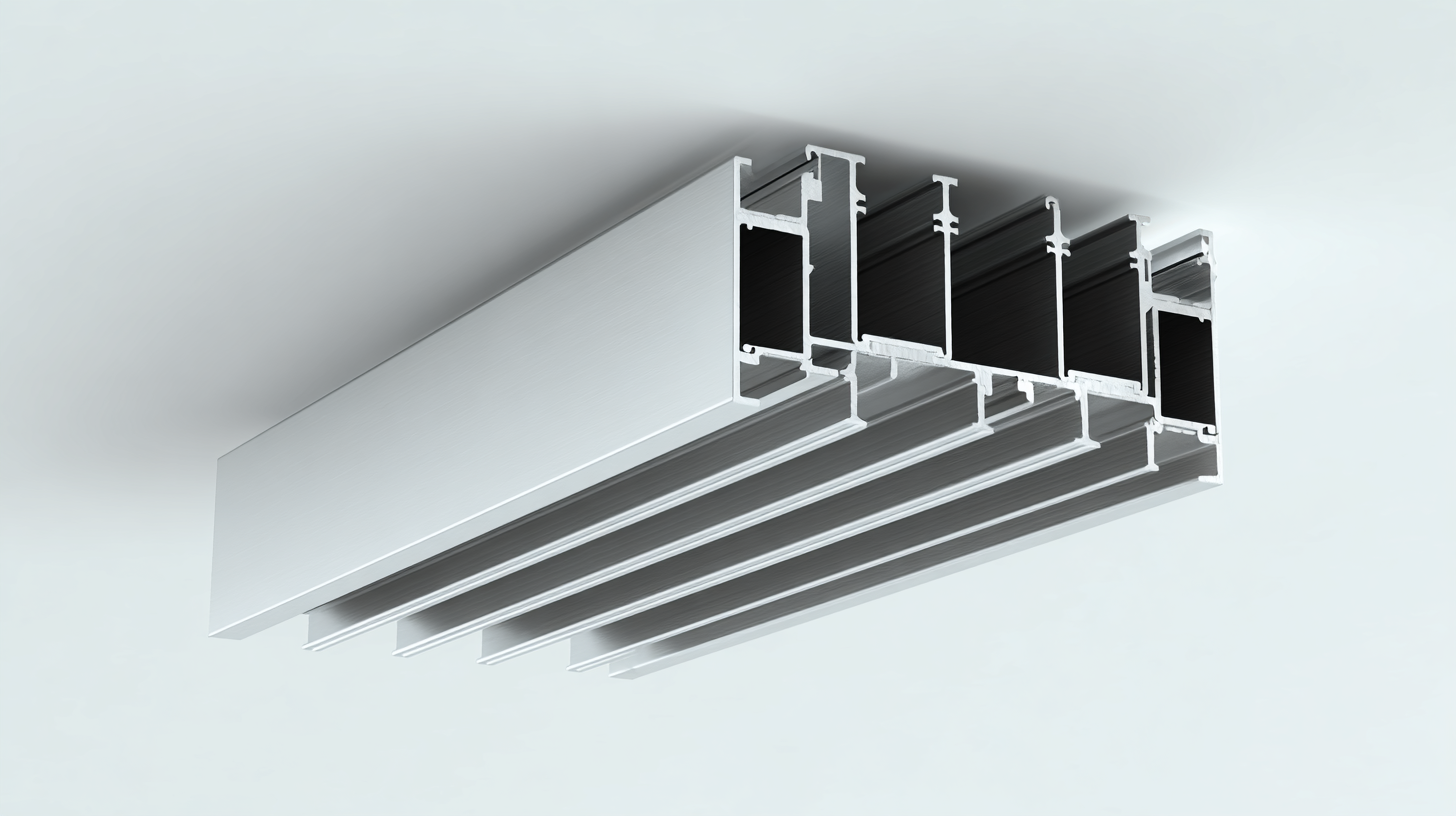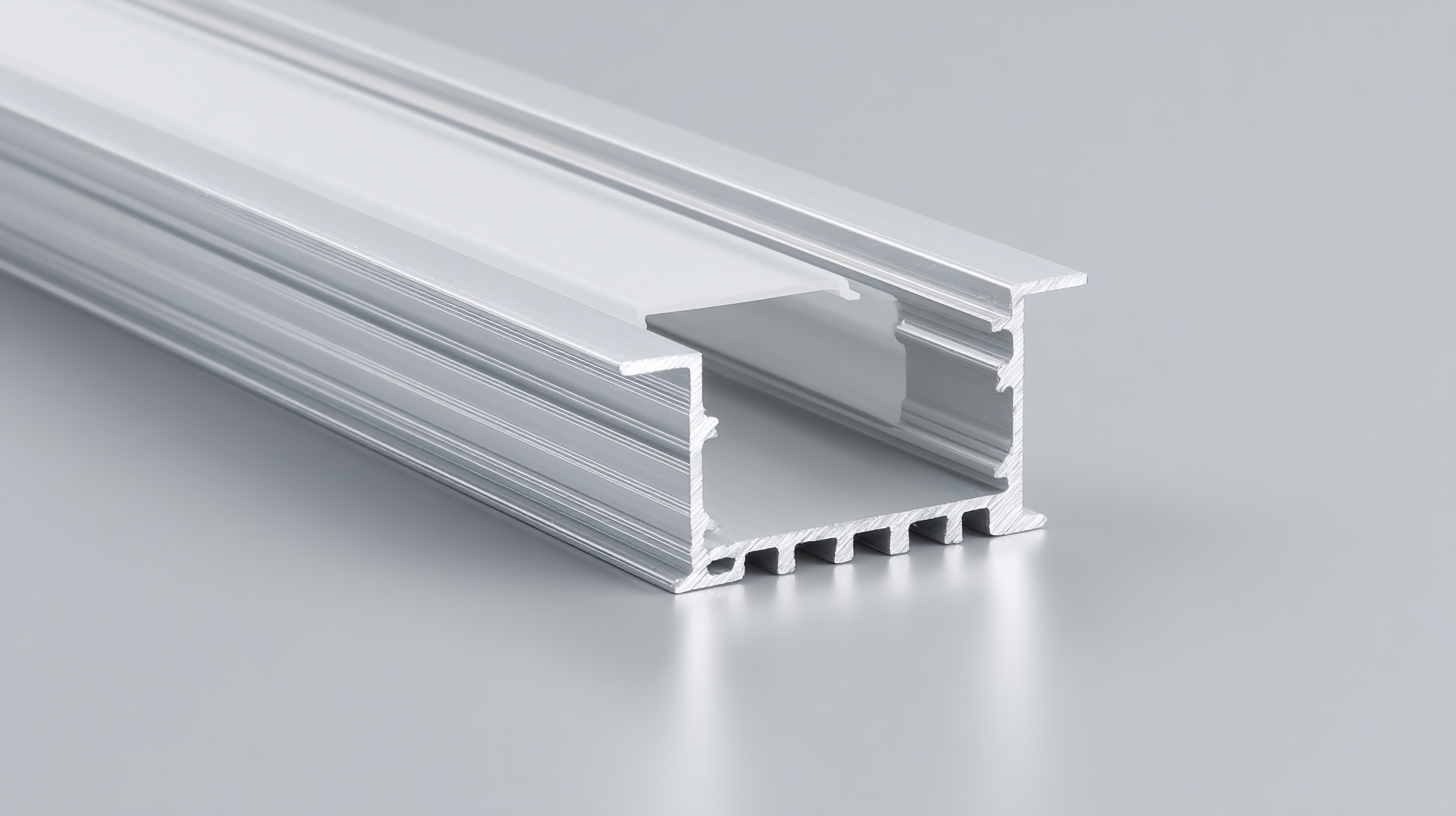As the global market continues to evolve, the demand for high-quality building materials has reached unprecedented levels, particularly in the field of Aluminium Ceiling Extrusion. According to a recent industry report by Research and Markets, the aluminium extrusion market is projected to grow at a CAGR of 5.6% from 2020 to 2025, driven by an increase in construction activities and a shift towards lightweight and environmentally friendly materials.

China, being a leading manufacturer, has positioned itself as a key player in this sector, offering premium aluminium ceiling extrusions that meet international standards. These products not only enhance the aesthetic appeal of commercial and residential spaces but also offer superior durability and versatility. As we look towards 2025, the integration of advanced manufacturing technologies and sustainable practices in the production of Aluminium Ceiling Extrusions will be crucial for capturing market share and addressing the evolving needs of global consumers.
The global market for ceiling tiles is poised for significant growth in the coming years, with projections indicating the market could surge to an estimated $26.5 billion by 2035. This expansion is driven by a variety of factors including advancements in design, increased demand for aesthetic modifications in commercial interiors, and a growing emphasis on acoustic performance and energy efficiency.

Data-driven analysis is becoming indispensable in designing commercial environments. For instance, firms are increasingly relying on rigorous onsite research to tailor their designs, ensuring that the materials chosen align harmoniously with the acoustic and aesthetic objectives of office spaces. This trend is reflected in the strategic shift towards high-quality materials, such as premium aluminium extrusions, which not only improve interior design but also contribute to sustainability efforts through their recyclable nature. As the ceiling tiles market evolves, the integration of data analytics in the decision-making process signifies a new era of innovation in architectural design.
Aluminium ceiling extrusions have emerged as a vital component in modern architecture, combining functionality with sustainability in innovative ways. As architects and builders strive for greener solutions, the lightweight yet durable nature of aluminium allows for efficient designs that reduce overall material usage. Its recyclability means that at the end of its life cycle, aluminium can be repurposed without loss of quality, making it a standout choice for environmentally conscious projects.
Moreover, the thermal and acoustic insulation properties of aluminium ceiling extrusions contribute significantly to energy efficiency. By enabling better climate control within buildings, they help reduce the reliance on heating and cooling systems, thus lowering energy consumption. Such features not only enhance the comfort of occupants but also align with the global movement toward sustainable construction practices. With the increasing emphasis on reducing carbon footprints, aluminium ceiling extrusions offer a practical solution for modern architectural challenges while promoting a healthier planet.
| Dimension | Value | Sustainability Benefit |
|---|---|---|
| Material Weight (kg/m²) | 5.5 | Lightweight structure reduces energy costs during transport. |
| Recyclability (%) | 100 | Aluminium can be fully recycled, reducing waste. |
| Lifecycle (years) | 50+ | Durable material leads to fewer replacements and reduced resource use. |
| Energy Consumption (MJ/kg) | 7.5 | Lower energy consumption in manufacturing compared to alternatives. |
| Thermal Conductivity (W/m·K) | 205 | Improves energy efficiency through better thermal regulation. |
The demand for aluminum ceiling solutions continues to surge in global construction sectors, influenced by the growing inclination towards sustainable and aesthetically pleasing building materials. Recent market research highlights a significant increase in the global acoustic ceiling tiles market, with projections indicating it will surpass USD 11.7 billion by 2032. This growth is propelled by a focus on reducing noise pollution in urban environments and enhancing interior acoustic comfort.
Moreover, the broader ceiling tiles market reflects similar trends, emphasizing the shift towards eco-friendly materials and innovative designs. As the construction industry increasingly embraces sustainable practices, the market for aluminum ceiling extrusions from China is well-positioned to thrive. With their perfect blend of functionality and style, these aluminum solutions are not only contributing to a more efficient construction process but also aligning with global efforts to adopt green building materials, paving the way for a more sustainable future in architecture.
 Choosing premium aluminium extrusions from China presents a smart economic choice for businesses looking to optimize costs while maintaining quality. With the global aluminium extrusion market projected to grow significantly, from USD 57.75 billion in 2020 to USD 104.52 billion by 2030, companies are increasingly recognizing the value of sourcing high-quality extrusions at competitive prices. China's advanced manufacturing capabilities and scale allow it to offer superior products that meet international standards without sacrificing cost-effectiveness.
Choosing premium aluminium extrusions from China presents a smart economic choice for businesses looking to optimize costs while maintaining quality. With the global aluminium extrusion market projected to grow significantly, from USD 57.75 billion in 2020 to USD 104.52 billion by 2030, companies are increasingly recognizing the value of sourcing high-quality extrusions at competitive prices. China's advanced manufacturing capabilities and scale allow it to offer superior products that meet international standards without sacrificing cost-effectiveness.
Tips: When selecting a supplier, consider their certifications and track record in producing premium aluminium products. This ensures not only adherence to quality but also reliability in supply. Additionally, engaging directly with manufacturers can lead to better negotiation outcomes and tailored solutions for specific needs.
Incorporating Chinese aluminium extrusions into your projects can also lead to innovative designs and efficiency in production. The ability to customize extrusions offers greater flexibility in design, making it easier to create products that stand out in a competitive market. As companies aim to reduce carbon footprints and improve sustainability, sourcing aluminium from adept suppliers can align with eco-friendly practices, providing both economic and environmental benefits.
Tips: Always assess the lifecycle impact of the materials you choose and consider suppliers who demonstrate a commitment to sustainable practices. This aligns well with modern consumer expectations and can enhance your brand's reputation in the market.
In recent years, the adoption of premium aluminium ceiling extrusions in various industries has surged, illustrating their versatility and aesthetic appeal. According to a report by Research and Markets, the global aluminium ceiling market is projected to grow at a CAGR of 8.5% from 2021 to 2026. This growth is largely attributed to the commercial sector's increasing preference for lightweight and corrosion-resistant materials that require minimal maintenance. Industries such as retail, hospitality, and healthcare have reported successful implementations of aluminium ceiling solutions, enhancing both functionality and design.
Case studies reveal how leading companies have leveraged these extrusions to create innovative spaces. For instance, a prominent hotel chain in Asia adopted aluminium ceiling panels that not only improved the acoustics of their lobby areas but also contributed to an eco-friendly aesthetic. These panels, backed by sustainability certifications, provided an additional marketing angle that appealed to environmentally conscious travelers. Similarly, a healthcare facility in Europe utilized aluminium ceilings to facilitate better hygiene and easy cleaning, resulting in higher patient satisfaction scores. Such implementations underscore the pivotal role of premium aluminium ceiling extrusions in transforming spaces across various sectors, driving market demand globally.
